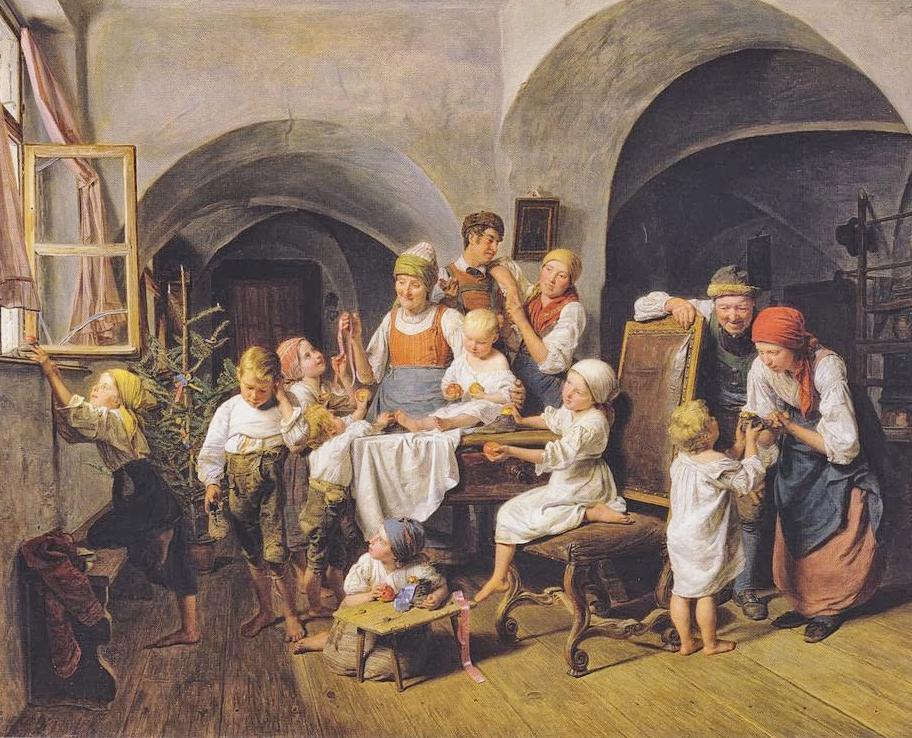
Figure 1.-- A wonderful scene of a 19th century Christmas in Austria is "Christtagmorgen" (1849), a painting by Ferdinand Georg Waldmüller. |


|
Christmas is undoubtedly the most important holiday in Austria. As in other European nations, December 6th is the day Saint Nicholas, the giver of gifts, makes his rounds. Arrayed in a glittering Bishops robe and accompanied by his devilish assistant, Knecht Ruprecht, he can occasionally be seen roaming the streets giving sweets and apples to good children while his companion playfully beckons "little sinners" to feel the string of his golden rod. In Austria, there is no Santa Claus. Children are taught that their presents have been brought by the ""Christkindl," a golden-haired baby with wings, who symbolizes the new born Christ.
“Christkind” is the name in Germany, “…kindl” is a minuitive dialect form in Bavaria and Austria, “…kindle” or “…kindli” in the alemanian part, i.e, German speaking Switzerland and the German South-West, “Schwaben”, Baden-Württemberg. And in High German the minuitive form is “…kindlein”. The story tells how the Christ child comes down from heaven on Christmas Eve and, with his band of angels, decorates and distributes trees. Christmas in Austria is a very musical time. Many of the world's greatest carols came from here. December 6 is the day when St. Nicholas and his grotesque assistant, Krampus, may pay a visit. (Krampus is how Knecht Ruprecht is named in Austria.)
But the gifts are brought on Christmas Eve by
the Christkind. Sometimes the Christkind will even help decorate the Christmas tree before the big Christmas Eve supper, which will probably feature carp as a main course. Dinner on Christmas Day will be roast goose with all the trimmings. Children would put their shoes by the window in the evening of December 6 so St. Nicholas could put some sweet gift or nuts inside. If feasible parents also arrange that a hired person (very often an uncle or a students or a upper grade child of the near family or neighborhood) in the robe and with a long white beard will visit the home at the evening. Most families would have a Christmas tree at December 24 and a “Weihnachtskrippe” with the holy family. For the children there is a “Weihnachtskalender”, hanging on the wall of their room from 1st of December till the 24th. They open a small window with some picture or even a sweet behind each day in the morning till Christmas Eve.
Christmas is undoubtedly the most important holiday in Austria. The same is true of other German-speaking countries--Germany and Switzerland.
"Krampus" comes to visit children (December 5). An Austrian reader tells us, "Children are often quite nervous about this visit. Krampus is a depiction of the devil. He is red, has horns and a tail. He carries a potatoe sack over his shoulder. A children's leg could be sticking out. He also rattles a long chain. Krampus is said to 'take' children that were not good during the year. I remember hiding under the table." I would take off for the hinterlands myself. But Krampus, being a holiday figure, of course, leaves diverse nuts, tangerines, apples and a few chocolates as well. Compared to Sinterklaas and Zwarte Piet in the Netherlands, however, the Austrian tradition seems much more scary. A Dutch reader writes, "Its a difference between day and night." The part about naughty children being taken away seems particularly scary.
The 'holy nicholas", called "der Heilige Nickolaus" brings chocolates, candies, nuts, oranges, tangerines, apples and small toys. As in other European nations, December 6 is the day Saint Nicholas, the giver of gifts, makes his rounds. Arrayed in a glittering Bishops robe and accompanied by his devilish assistant, Knecht Ruprecht, he can occasionally be seen roaming the streets giving sweets and apples to good children while his companion playfully beckons "little sinners" to feel the sting of his golden rod. While the good little children are rewarded, Krampus takes away the bad ones. In some parts of Austria Knecht Ruprecht is called Krampus. There are similarities between the Christmas traditions in other European countries, especially southern Germany and German-speaking Switzerland. This is also true of the Netherlands.
In Austria, there is no Santa Claus. Children are taught that their presents have been brought by the "Christkindl," a golden-haired baby with wings, who symbolizes the new born Christ. The story tells how the Christ child comes down from heaven on Christmas Eve and, with his band of angels, decorates and distributes trees.
Christmas in Austria is a very musical time. Many of the world's greatest carols came from here.
December 6 is the day when St. Nicholas and his grotesque assistant, Krampus, may pay a visit. But the gifts are brought on Christmas Eve by
the Christkind. Sometimes the Christkind will even help decorate the Christmas tree before the big Christmas Eve supper, which will probably feature carp as a main course. Children would put their shoes by the window Christmas Eve so St. Nicholas could put their gift inside. Most families would have a Christmas tree, very often with wax candles, not with electric bulbs. In the late evening, 10 pm or even at midnight, many people go to church for the “Christmesse” or “Christmette”, even with the older children. They take a burning candle home from the tree in the church to lighten the candles of the tree at home
Dinner on Christmas Day will be roast goose with all the trimmings. All children come together to parents and grandparents.
December 26, the second Christmas Day, also called “Stephanstag” is another holiday, meeting further family relatives.
Navigate the Boys' Historical Clothing Web holiday pages:
[Return to the Main holiday page]
[Return to the Main national Chrisrtmas page]
[Return to the Main Austrian activity page]
[New Years]
[Valetines]
[St. Patrick's Day]
[Easter]
[Fourth of July]
[Haloween]
[Thanksgiving]
Navigate the Boys' Historical Clothing Web Site:
[Introduction]
[Activities]
[Biographies]
[Chronology]
[Clothing styles]
[Countries]
[Topics]
[Bibliographies]
[Contributions]
[FAQs]
[Glossaries]
[Images]
[Links]
[Registration]
[Tools]
[Boys' Clothing Home]
